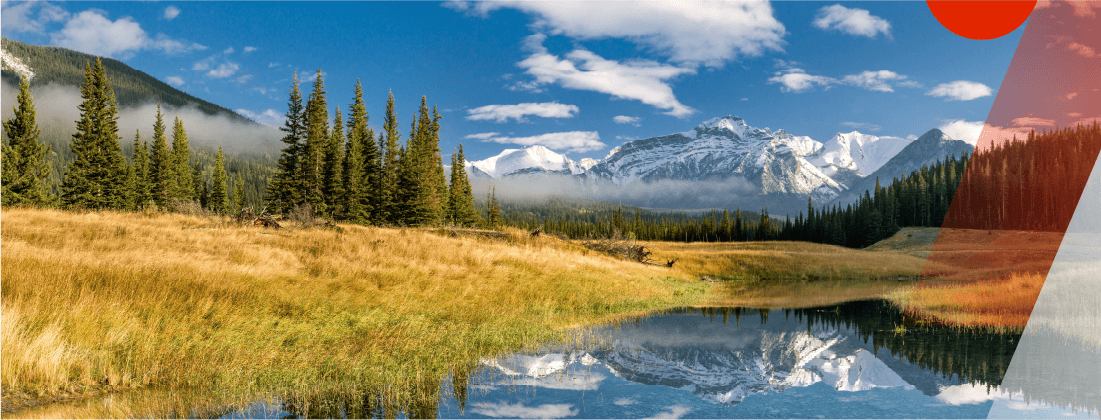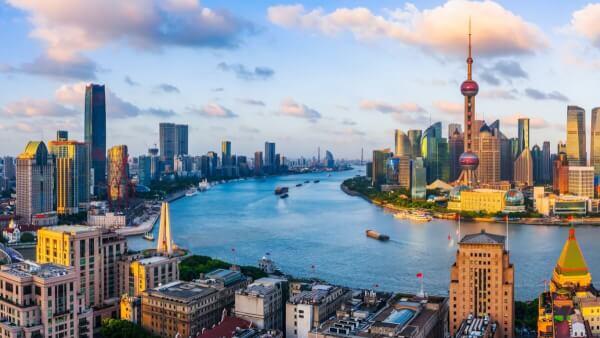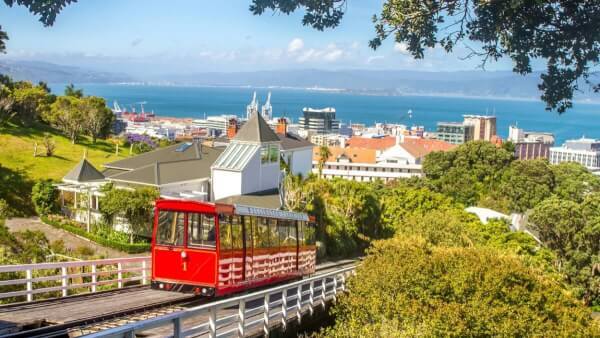Travelling to the Philippines from Australia. The Lowdown
Travelling from Australia to the Philippines? Let’s fill you in on the travel requirements, touristy and non-touristy spots and other need to knows in our guide

Canada has a fantastic balance of modern cosmopolitan cities and wild rugged natural scenery - with the bonus of English being spoken almost everywhere, making getting around simple enough. You’ll be welcomed whether you want to ski or trek, sample the region’s finest wines, or go spotting some of Canada’s amazing wildlife.
A trip to Canada could involve dozens of different activities - but you’ll need to think about the best way to pay for them, to make your money go further. We’ll cover the basics of travel in Canada in this guide, and also touch on a smart way to save money on currency conversion and fees using the Wise borderless account and linked Mastercard. Ready to get started?
If you’re headed to Canada, you’re in for a great time. You’ll get the most out of your visit if you do some thorough research in advance - after all, you’re travelling over 14,000 kilometers just to get there, so you want to pack in as much as possible.
For some inspiration head over to the official Canada tourism website, where you’ll find handy planning tools including advice and ideas by theme and location¹.
Look out for practical advice related to your trip too. At the very least, you’ll need to work out the best way to get to your hotel once you arrive, and you might want to book some tours and trips in advance if you’re going to be in a busier area or are visiting in peak season. Weather in Canada can be extreme, so before you pack you’ll need to check out the predicted and likely temperatures for wherever you’re headed.
It’s always worth keeping an eye on official advice regarding your destination, too. Get advice on safety and visas on the Canada page of the Smart Traveller website - an Australian government supported resource to help travellers all around the world².
Canada isn’t a cheap destination. No matter whether you’re heading for a luxury city break, or backpacking on a budget, you’ll want to make sure you don’t waste cash on excessive fees and charges.
A good way to make sure you’re getting a good deal is to keep a close eye on the exchange rate from Australian to Canadian dollars.
Get an online currency converter or app which shows the mid-market rate for the currency pairing, and use this to compare the rates you’re given when exchanging currency.
You might well find the rate you’re offered is not as good as the one showing on your app or Google. That’s because providers often add a markup to the mid-market rate to boost their profits. This is another fee you pay - but it’s not always transparent and can mean your currency conversion costs more than you expect.
Avoid currency markups with a Wise borderless account and card. More on that later.
It’s a smart idea to travel with several different ways of accessing your money - which probably means you’ll have your cards with you as well as cash. Read the terms of your accounts before you travel, to make sure you’re aware of the charges your own bank may add for using your credit or debit card overseas.
There may be flat fees added to spending and withdrawals, a percentage margin of 2% - 3% added to each transaction - or both - and can these costs can quickly mount up.
You might never have heard of DCC but if you’ve ever used your card overseas you’ve probably come across it without even knowing.
DCC is where you’re asked if you want to pay in your home currency - Australian dollars - instead of the local currency - Canadian dollars - when you’re abroad. It can happen when paying with your card in a store, or at an ATM. Choosing your home currency sounds simple, but it’s expensive.
To get the best exchange rate and lowest fees you should always pay in the local currency - in Canada and anywhere else you travel.
Ditch many of the costs and inconveniences of managing your money abroad, with a Wise borderless account.
You can hold, send and receive dozens of different foreign currencies and spend or withdraw local cash easily using the Wise borderless Mastercard. Just top up your account in dollars, and switch to the currency you need using the mid-market exchange rate. There are no hidden fees, just a transparent charge for the conversion - meaning you avoid foreign transaction fees.
The Australian government recommends you exercise normal safety precautions when visiting Canada. Crime levels are similar to at home, so you’ll need to look after your belongings as you would anywhere else - watching your bags in busy places and removing valuables from vehicles for example. And as with anywhere else, there will be neighbourhoods in cities which are more dangerous than others - exercise caution especially after dark.
There are a few other rules to think about when you visit Canada. Some laws are subject to variations based on the province you’re in. Legal drinking ages may be different for example, so check out the details for your destination. It’s also legal in much of Canada to use mariujana. However, it’s not legal to export the drug - so don’t try.
If you need help when travelling, the Australian consular service is there for you. Check out the information about their support services, as well as relevant fact sheets and contact information, available on the Smart Traveller website³.
Australian citizens don’t need a visa to enter Canada - however, you’ll need to apply for an Electronic Travel Authorisation (eTA) if you’re flying to Canada. If you’re driving over the US border or arriving by boat, you don’t need to do this⁴.
It’s worth noting that your eTA may be refused if you have a criminal conviction - and it is not in itself a guarantee that you can enter Canada. Instead, the border officers may ask to see further paperwork and will want to know your travel plans, before they actually allow you into the country. Check out all the details online, to make sure you’re prepared⁵.
You’ll need to book in advance if you’re headed to Canada during peak seasons - and it’s worth checking out accommodation options if you’re planning on travelling the more rural areas, too. There’s no guarantee you’ll run across a motel or other place to stay, so some advance research is essential.
That said, in most towns you’ll find a range of options from hostels to high end hotels, with camping available in the countryside, as well as in some urban campgrounds. The Rough Guide recommends you consider the following prices when budgeting your trip⁶:
Major cities in Canada are covered by their own networks of public bus, ferry, subway or a combination of these and other options. Or choose a taxi or Uber if you want the convenience and don’t mind the extra cost. Uber is available in a growing number of cities in Canada, but it’s not universal, so do check for your destination if that’s your preferred choice.
That said, if you’re in Canada to see a range of cities and get out into the open countryside, you’ll probably be best off with your own wheels. Canada is a huge country, and although internal flights are convenient, they can be expensive. Trains are also available, but can also be slow and pricey. If you don’t want to drive, charter buses are the other common choice for getting around - book online or with an agent.
Driving is convenient and there is a good road network. However, conditions can be harsh and changeable, so always check out the weather before you head off, and carry emergency supplies.
Canada has much to offer, from interesting and vibrant cities, to world famous nature which can be enjoyed hiking or biking during the milder months - or boot up and get out there for some adrenaline pumping winter sports.
Your trip will be unique to you, so researching your options is key - here are a couple of ideas to get you started.
Ready to get planning? Here are a few more tips to consider before you jet off to Canada.
Canada has so much to offer, you don’t want to run out of money while you’re having the time of your life. Get a Wise borderless account and linked Mastercard to manage your money conveniently, and cut the costs of currency exchange and overseas spending.
Sources:
All sources accurate as of 14 Jan 2020
*Please see terms of use and product availability for your region or visit Wise fees and pricing for the most up to date pricing and fee information.
This publication is provided for general information purposes and does not constitute legal, tax or other professional advice from Wise Payments Limited or its subsidiaries and its affiliates, and it is not intended as a substitute for obtaining advice from a financial advisor or any other professional.
We make no representations, warranties or guarantees, whether expressed or implied, that the content in the publication is accurate, complete or up to date.

Travelling from Australia to the Philippines? Let’s fill you in on the travel requirements, touristy and non-touristy spots and other need to knows in our guide

Want to import your boat from the US to Australia? In this quick guide, we’ll share the costs, timeframes and other need to knows

Want to import your boat from China to Australia? In this quick guide, we’ll share the costs, timeframes and other need to knows

Travelling from Australia to New Zealand? Let’s fill you in on the travel requirements, touristy and non-touristy spots and other need to knows in our guide

Explore our guide on the Commbank credit card travel insurance, detailing coverage, benefits, elligibility and essential tips for your next trip.

Both DragonPass and Priority Pass offer access to airport lounges worldwide. In this guide, we go over key differences that might make one a better fit for you.